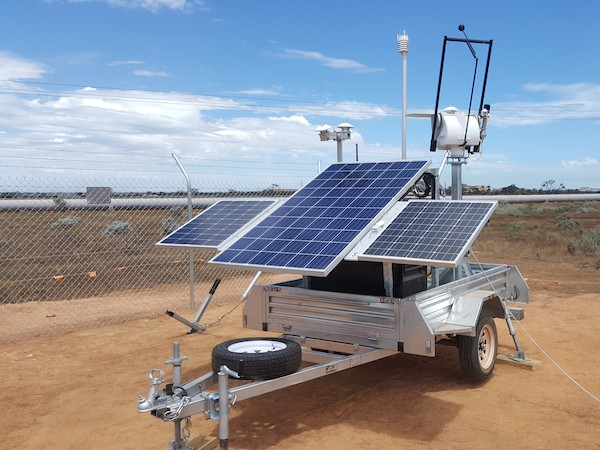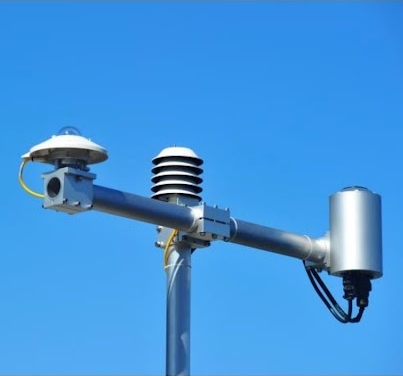Resource Monitoring: The simple solution to solar asset underperformance
2023 is expected to be a breakthrough year for the U.S. renewables industry. The Inflation Reduction Act, supported by a raft of favorable state and federal policies, is set to supercharge investment, and see projects developed across the country.
Yet, to deploy capital efficiently and maximize the ROI of renewable resources, a persistent problem that has plagued existing solar projects must be addressed: underperformance of assets. One solution to this problem is the collection of more comprehensive preconstruction data sets.

No measurement, no management
Despite being the most significant contributor to new generation capacity in the U.S. for a third straight year in 2022, solar power generators continue to struggle with performance and financing of new and current projects.
A recent report on solar risk assessment served as a wakeup call for the U.S. industry. It found that 92 percent of lost EBITDA is due to underproduction caused by poor availability, unrealistic production forecasts, and lower-than-expected irradiance (which dwarfed all other sources of risk).
Meanwhile, one in three solar assets under development is overstating P50 estimates by more than 5 percent, which equates to equity investors locking in returns that are 30-40 percent lower than expected, reducing the overall value of investments.
The crux of the problem
The underlying cause of these issues can be linked to minimal or flawed on-site resource monitoring being deployed, before any shovels breaking ground on project construction.
Looking at markets with higher saturations of renewables in their energy grids, such as Australia, the use of preconstruction data collection has been integral to the industry's success and growth. In Australia, bankable on-site monitoring data is collated to inform and validate project modeling prior to capital being deployed in construction.
Resource assessment should be conducted with multiple monitoring systems onsite, especially for utility scale solar, where conditions on one end of a project can differ from the other end (usually several miles apart).
Complex terrain projects have also increased in construction feasibility through monitoring, whether on the side of a hill or next to a forest. Accurate preconstruction solar measurement allows developers to optimally map out solar arrays, helping to ensure efficient production for the life of the project.
The aforementioned report also found that uneven terrain at solar projects is causing up to 6 percent losses compared to preconstruction estimates, with industry-standard solar energy modeling software not fully accommodating of terrain variables.
Only physical on-site instrumentation can deliver highly accurate measurement data, giving project developers real-time access to on-the-ground data to accurately model and forecast production outputs, mitigating the data-related issues highlighted earlier.
A comprehensive prebuild resource assessment campaign should ideally include the following measurements:
• Irradiance - GHI, POA, Albedo, Direct, and Diffuse
• Soiling Rate & Ratio
• Temperature, Pressure, Humidity, and Rainfall
• Wind Speed and Direction
Regardless of location, these measurements are essential in assessing, financing, and operating solar energy projects. They help to reduce the uncertainty inherent in computer models, improve bankability, and reduce equity risk in highly geared projects.
Deploying the right monitoring systems is critical to the success of solar projects.
 Generation Forecasting and Cloud Cameras
Generation Forecasting and Cloud Cameras
Another development that was driven by higher penetration of renewables in the Australian market has been the requirement for intermittent generators (wind and solar) to provide grid operators with 5-minute dispatch forecasts. These forecasts are retrospectively compared with generation output, and scored for accuracy. Forecast errors can result in financial penalties for generators, depending on whether those errors have helped or hindered grid frequency during these intervals.
As a direct result of this, a sophisticated self-forecasting industry has developed to provide generators with accurate 5-minute forecasts, avoiding what is termed ‘Causer Pays’ penalties. Essentially, this is how grid operators recoup their costs for Frequency Control Ancillary Services (“FCAS”) caused by generation deviation error from generator forecasts.
An essential piece of the self-forecasting puzzle has been the development of state-of-the-art cloud camera, or CloudCam technology, which identifies, tracks and predicts cloud movement over solar arrays. This technology has been used to good effect in providing highly accurate 5-minute forecasts, with great results on utility scale (>30MW) solar farms in Australia and around the world. In addition to short-term forecasting, CloudCam can also be used in microgrid and off-grid operations to increase grid stability, manage spinning reserve, optimize battery cycling (as well as size), and save fuel.
Data Accessibility
No matter what system is selected for a solar or any renewable project site, the software that allows users to access the data produced onsite is equally important. After all, the question is not how much data is available, but how the data is used. The real smarts in data monitoring are often in the software that analyzes it and makes it accessible for users.
Real-time access to data is now available, and can provide project proponents with insights and trends into what is occurring at any time, day or night. This can allow businesses to assess unit location, and even monitor adverse weather events at site as they are occurring.
By embracing better monitoring systems, the U.S. renewables industry – from investors to O&M – can build and operate projects more intelligently, to generate more clean energy, and achieve better project returns.
Simone Lutz is the Head of North American Business Development for Fulcrum3D, an Australian cleantech company specializing in monitoring and remote sensing systems for renewable projects, providing affordable and accurate data.
Fulcrum3D | www.fulcrum3d.com
Author: Simone Lutz
Volume: 2023 March/April










.png?r=8310)

